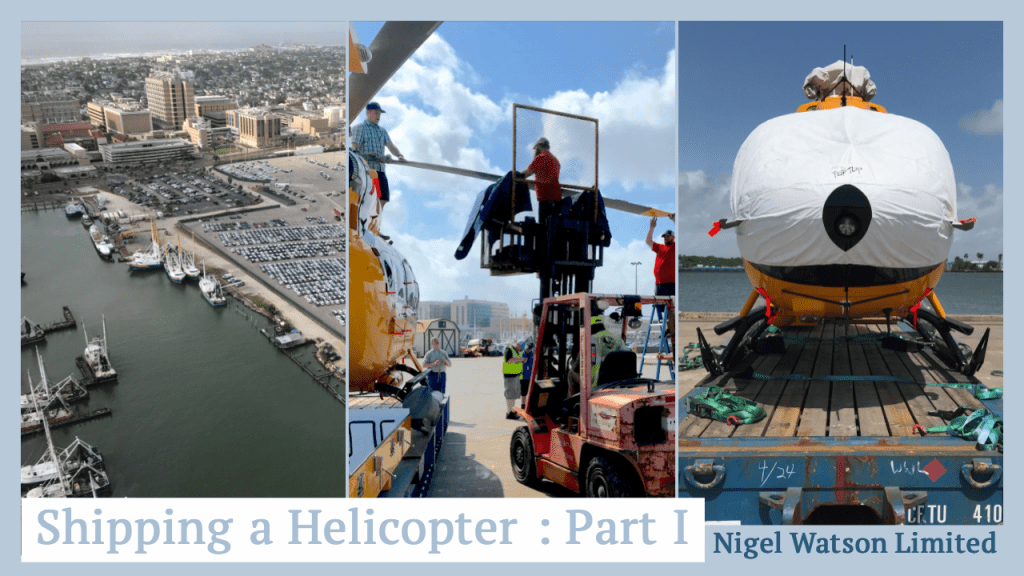You’ve just delivered a new helicopter in the US. But you need it in Europe. How will you go about shipping a helicopter?
The principal has a new helicopter. This beautiful new aircraft is the property of the owning company and principal user, but has been entrusted to our care as the operator. This is a privilege, and not one that is ever taken for granted. The relationship between operator and principal is built on trust, after all this is the foundation of the principal’s venture into private helicopter use.
Having just completed the delivery of the new H145 from Airbus Helicopters in Grand Prairie, TX in the U.S., the client would like it embarked onboard their yacht in Europe as soon as possible.
So, the journey begins.
•••
Crossing the Atlantic
There are 2 ways we could cross the Atlantic: by air or by sea. Antonov create the largest cargo aircrafts in the world, more than capable of carrying an H145 over the Atlantic – but at a price ! The alternative is a RO-RO (roll-on, roll-off) on a Container Ship. The helicopter is embarked on a low loader trailer and carried onto one of the cargo decks inside the vessel.
We will delve into the pros and cons of each another time. For now, it suffices to say that a RO-RO was deemed the best option for us. Our operations department booked us a spot, and now we have a boat to catch !
Let’s prepare the helicopter for shipping !
•••
From Delivery to Port
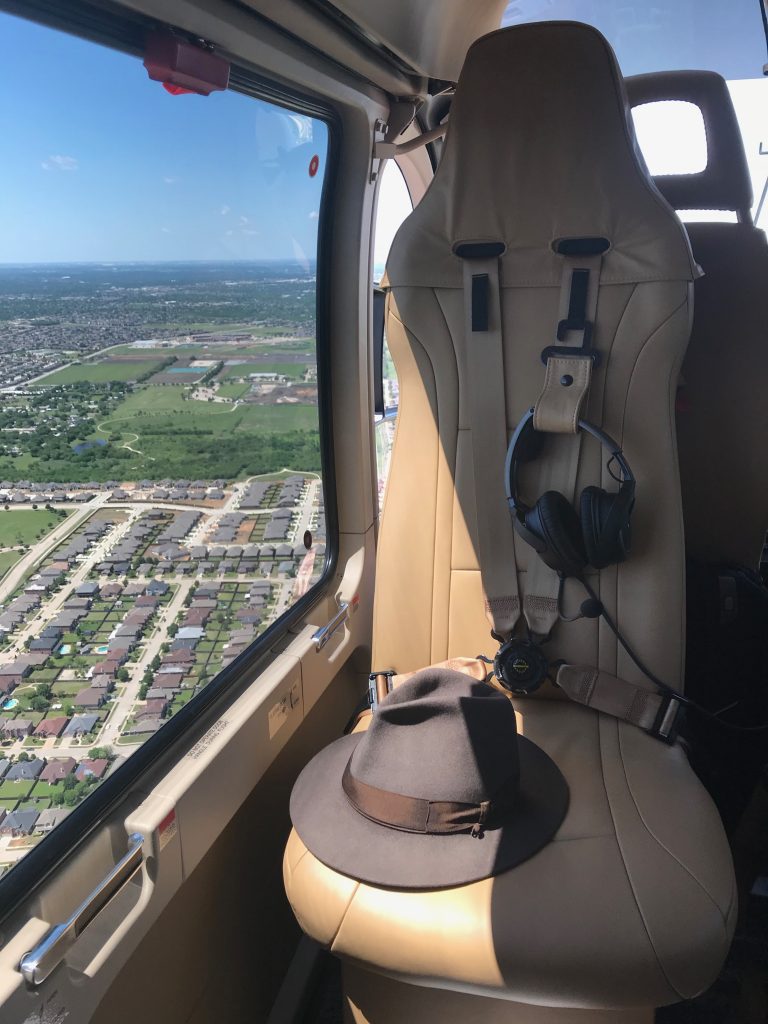
The H145 is a great helicopter with plenty of power and is perfectly suited to the world of Heli-Yachting. But with floats as drag and heavier than normal completions weights, it is not the fastest. A range of 120 – 130 knots would be fair a fair estimate, and you may find yourself closer to the 120 mark. Some simple maths later, and you get to a total journey time of around 2.5 hours.
But Texas is a windy place, and of course as luck would have it, on our day of transit we had 20 knots on the nose all the way. We did however manage to avoid the infamous spring-time thunderstorms common in the area.
Another interesting element to arriving at the port for imminent departure is that the helicopter should arrive with 25% fuel onboard. Therefore fuel planning becomes even more important; something to further focus the mind of our pilot.
•••
When will you get a tail rotor chip light? During a delivery flight would be a good guess! It’s definitely not uncommon. We had already decided to drop into Galaxy FBO, and just prior to touch down on the warning light came on. Fortunately our onboard engineer allowed us to inspect the plug, revealing a tiny sliver of metal, just big enough to make the circuit. With the plug reinstalled, and paperwork resolved, we could continue to Galveston.
(By the way, Galaxy FBO (👉 link here) is a superb facility just to the North of Houston. Ask for under canopy parking in your jet – its very cool ! )
•••
Arriving at the Port
From Galveston airport the port is a short flight, a matter of minutes. Galveston is a union port and with that comes time constraints. The planning prior to landing is vital. In our case, we received an excellent service from Kurt Kapota at Helicopter Internal Shipping Services Inc. (👉 link here), the company of a longtime colleague and Friend Victor Brazzone.
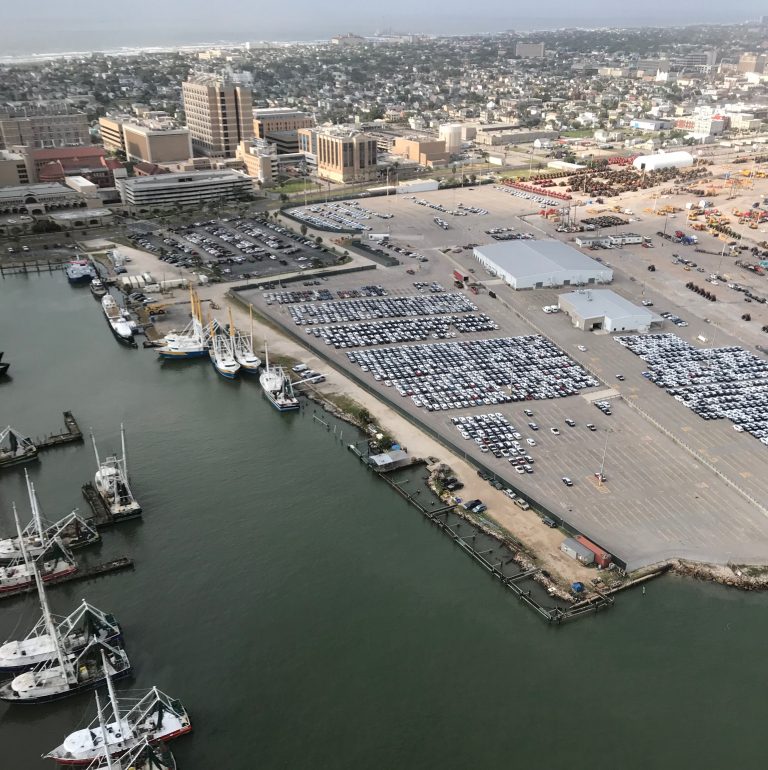
Dollies are positioned. Radio communications established. Police cars with flashing lights positioned. And then the helicopter arrives.
Three dollies are put together to give you “a bigger target” to aim for. However, for the pilot it comes down to very precise flying to get as close as you can to the width of an individual dolly. The tolerances either side of the skids are minimal, just a few inches. You need a light touch on the controls and experience on type. It is important to be balanced equally on the dolly, so ground handling wheels are great for those final few centimetres.
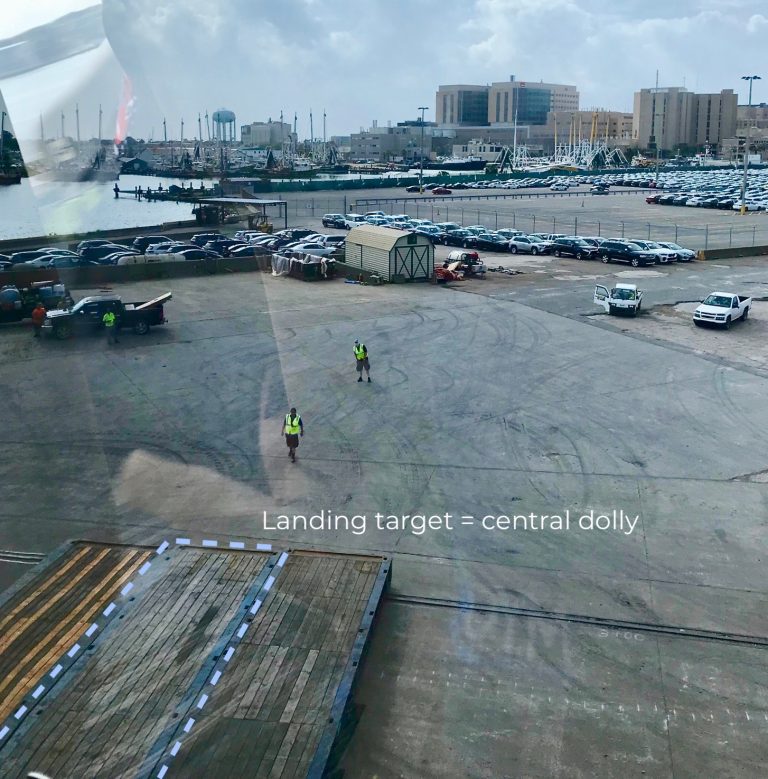
•••
Preparing to Store the Helicopter
With the H145, the level of breakdown is only the removal of the main rotor blades. German precision engineering is remarkable. The blades come off by removing pins that connect the rotor blade to the rotor head. The tolerances associated with these pins are very precise.
Their removal can only be effected when there is no weight upon them. So, at this point we welcome a fork lift with a cherry picker basket (and a very enthusiastic driver!) to the team.
Position the blade and fork lift at right angles and avoid any of the trim tabs along its length. Raise the basket, protected with blankets at the edge and take the weight of the blade. Now with the finest movements find that sweet spot. It can take a while to find it, so the first blade is likely to be the hardest. But when you do, the two pins on each blade can be removed with ease.
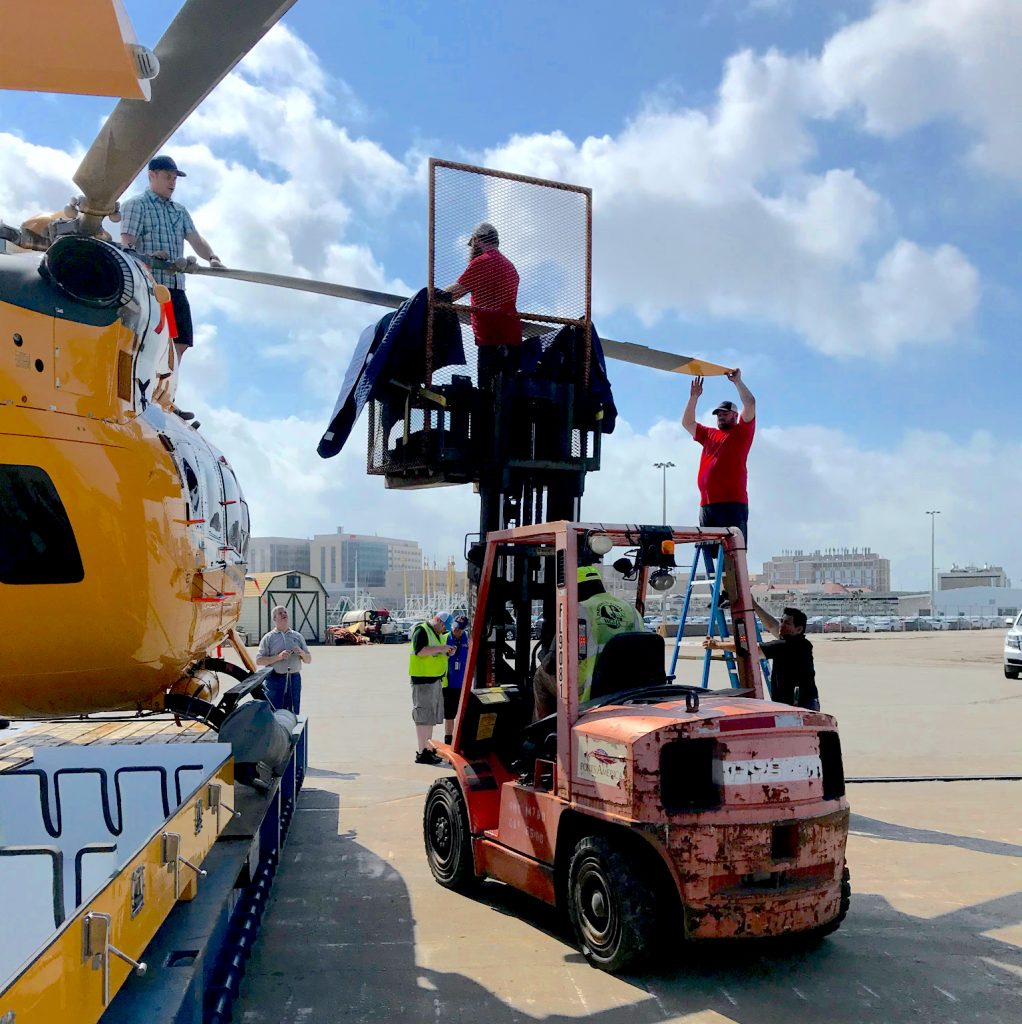
Each blade needs to be gently lifted down to the blade box, secured and locked away like Christmas presents for a special day. With the blades off, partial covers are then put on protecting the nose, rotor head and fenestron. Cargo straps are then placed across the helicopter skids, being careful not to chafe the paint work. We had six straps to stop lateral and longitudinal movement in transit.
Helicopters come with stuff, and the stuff in this instance was stored inside the helicopter and in a large wooden crate. Now, on the dolly, there is a helicopter with no blades, covers on, a blade box and and a large wooden crate. With the crate that’s about 10.1 Million dollars.
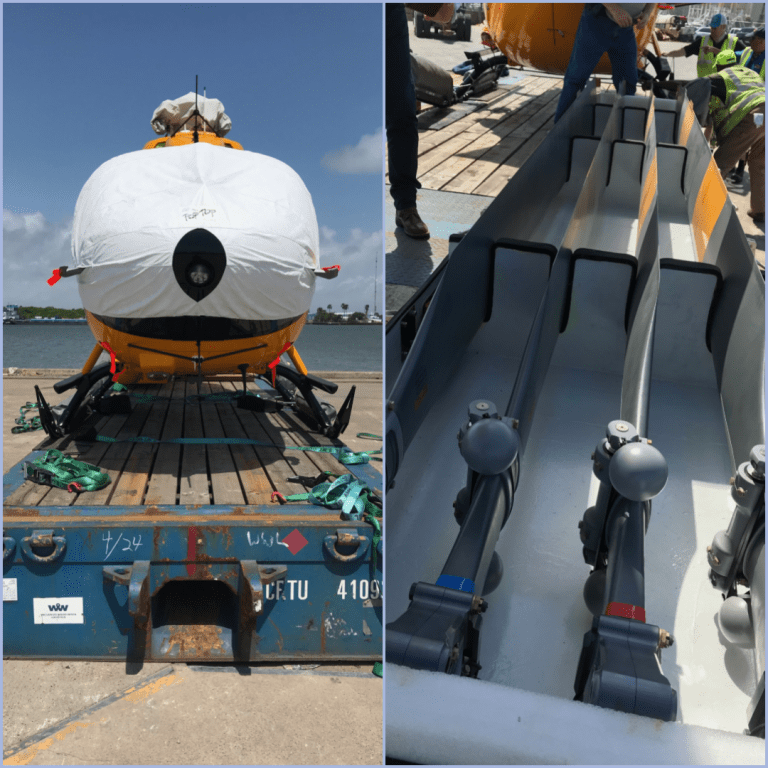
•••
Shipping the Helicopter – Bon Voyage !
Container ships and RO-ROs are working all the time. Time in harbour is lost revenue, so the in-and-out discharging and loading has to run efficiently. Our helicopter is now a part of that process. The vessel arrives, off-loads and loads, and then is on its way.
From Galveston, she will go South East around the keys of Florida, hang a left and then make a bee-line for the English channel.
We wish her well and hope for following seas and light winds…
•••
Shipping a Helicopter : Part II will be along in a couple of weeks so watch this space !
•••
This is only a small part of the delivery process, and the wider Helicopter Lifecycle, read more about it 👉 here.
Or you can always get in touch directly to talk about it – details are on my 👉 contact page.
Are you looking for an operator for your newly weighed and delivered helicopter? Visit Luviair’s website 👉 here.

